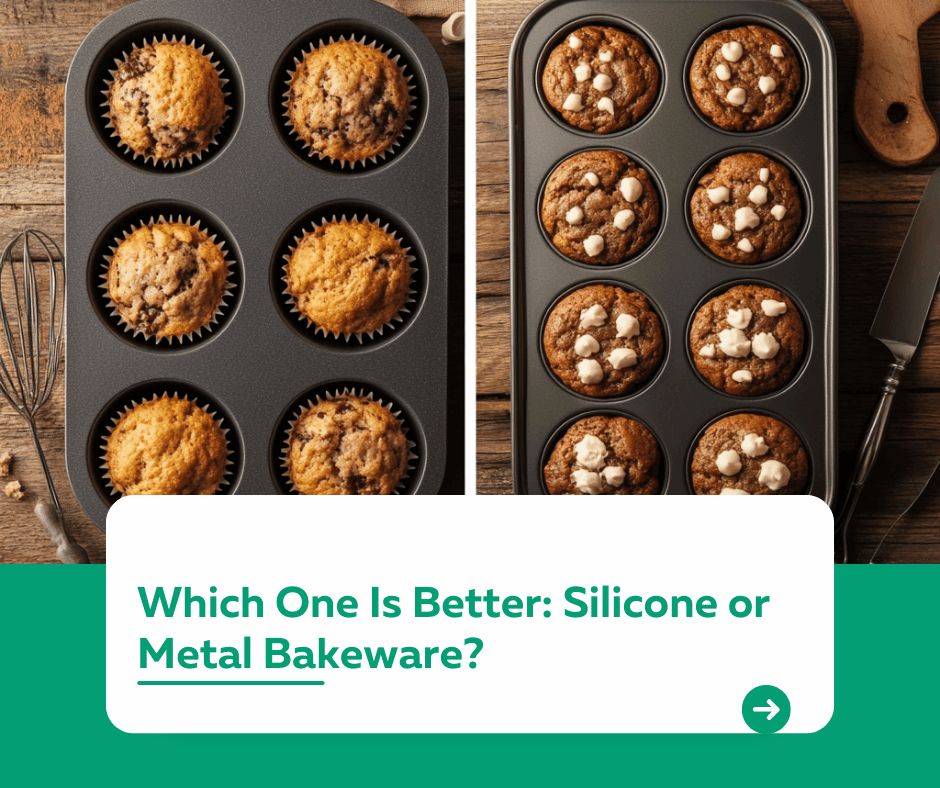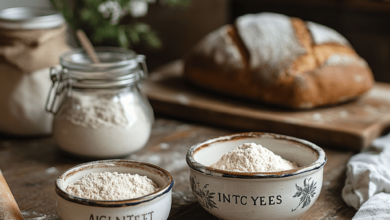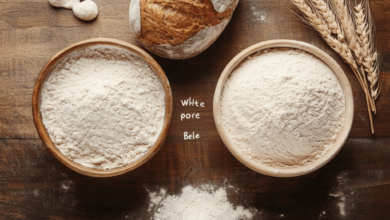Which One Is Better: Silicone or Metal Bakeware?

Introduction
“Which one is better: silicone or metal bakeware?”
The choice between silicone and metal bakeware depends on your baking needs and preferences. Each has unique advantages and disadvantages, and understanding their differences can help you decide which one is better suited for your recipes. This guide compares silicone and metal bakeware to help you make an informed decision.
1. Overview of Silicone Bakeware
Silicone bakeware is made from flexible, heat-resistant material that’s non-stick and easy to use.
- Advantages:
- Non-stick surface makes food release easy.
- Flexible, making it easy to remove baked goods without damaging them.
- Lightweight and easy to store.
- Heat-resistant and safe for the oven, freezer, and microwave.
- Disadvantages:
- Can be less durable over time, especially with frequent use.
- May not distribute heat as evenly as metal bakeware, leading to inconsistent browning.
Best Uses: Muffins, cupcakes, and no-bake desserts.
2. Overview of Metal Bakeware
Metal bakeware, typically made of aluminum or steel, is a classic choice for baking.
- Advantages:
- Excellent heat conduction for even baking.
- Durable and long-lasting, even with heavy use.
- Provides a crispy, golden crust for baked goods.
- Disadvantages:
- May require greasing or parchment paper to prevent sticking.
- Heavier and bulkier than silicone.
- Can warp at high temperatures if not made from quality materials.
Best Uses: Cakes, breads, cookies, and pies.
3. Comparing Silicone and Metal Bakeware
| Feature | Silicone Bakeware | Metal Bakeware |
|---|---|---|
| Heat Distribution | Less even | Excellent |
| Non-Stick | Naturally non-stick | May require greasing |
| Durability | Flexible but less durable | Sturdy and long-lasting |
| Storage | Lightweight and flexible | Bulky and heavier |
| Ease of Use | Easy to remove baked goods | Provides better structure |
Tip: Use metal for recipes that require precise heat and structure, and silicone for convenience and easy cleanup.
4. How to Choose the Right Bakeware
Consider these factors when deciding between silicone and metal bakeware:
- Type of Recipe:
- Use metal for cakes, breads, and cookies that require even heat and structure.
- Use silicone for muffins, cupcakes, and recipes that don’t need crisp edges.
- Baking Frequency:
- Choose metal if you bake often and need durability.
- Opt for silicone if you bake occasionally and prioritize convenience.
- Storage Space:
- Silicone is lightweight and easy to store in tight spaces.
- Metal requires more storage space but offers sturdiness.
Conclusion
Both silicone and metal bakeware have their place in the kitchen. Silicone is great for ease of use and flexibility, while metal excels in heat distribution and durability. Understanding their differences will help you choose the best bakeware for your specific baking needs.
For more baking tips and comparisons, visit our Kuestion.com.




